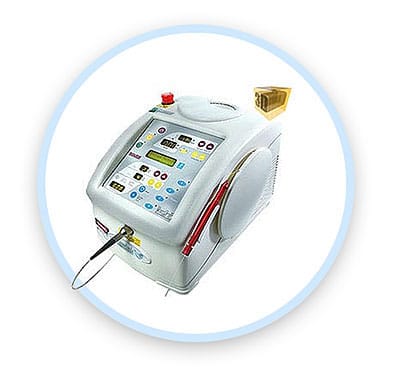
Gum contouring allows the patient to have longer, younger looking teeth and can correct the appearance of crooked teeth due to an uneven gum line. An easy and painless procedure, consulting our experienced cosmetic dentist will help you decide if laser gum contouring will achieve the results you want.
At OrthoSmile, we use this LaserSmile, soft-tissue Diode laser, to reshape or remove gum tissue with immediate results and an extremely fast healing time. Gum tissue can be reshaped safely and comfortably with Lasersmile™ to create a harmonious gum line in relation to the patient’s smile. Teeth that appear to be too short (a gummy smile) can be cosmetically lengthened by reducing the amount of undesired gum tissue.
The use of the laser in the reshaping of gum tissue eliminates the need for suturing, leading to much quicker recovery for patients.
There are many benefits to having laser gum contouring treatment as described in more detail below:
Not everyone may be eligible for laser gum contouring as your dentist may advise you that it is not suitable for your individual dental circumstances. Your dentist may advise you of alternatives to laser gum contouring if you are not a suitable candidate. If you are a suitable candidate for laser gum contouring you may have an initial consultation with the cosmetic dentist who will plan out your laser gum contouring treatment.
is a procedure used in cosmetic dentistry to remove black spots or patches on the gums caused by excessive melanin.
The normal color of the gum tissue is pink, but excess deposits of melanin can create what seem to be black spots or patches on the gums, creating an aesthetic or cosmetic problem. Discoloration may also be caused by long-term use of certain medications.
A clinical assessment is carried out to customize the treatment to the patients needs, and the procedure itself can involve surgical, chemical, or laser ablation techniques.
Melanocytes are cells, which reside in the basal layer of the gingival epithelium. These cells produce melanin, which are pigments that cause discoloration or dark spots in gum. A dental laser can target and ablate the melanocytes, thus reducing the production of melanin in the gum tissue. This results in a lighter and more uniform color of the gum.

A laser is an instrument that produces a very narrow intense beam of light energy. When laser light comes in contact with tissue, it produces a reaction. The beam of light produced by the laser has the ability to remove infected soft tissues in a periodontal pocket and vaporize the bacteria. The aspect of laser assisted surgery that most people appreciate is its comfort.
While no treatment is always painless, the laser will reduce the need for post operative pain medication. The infected gum tissue will be removed with minimal bleeding and swelling because the powerful light beam seals blood vessels and nerve endings. Laser gum treatment is appropriate for patients who are not good candidates for surgery. This includes people who are diabetic, pregnant or taking medications such as aspirin, Coumadin or cyclosporine.
What's the best way to treat gum disease? Diode Lasers are a new alternative way to gum surgery, is a less painful, less traumatic way to treat periodontal disease at any stage
It's an infection of the gums. It starts out as plaque, an opaque film on the teeth that hardens to form calculus or tartar. As tartar accumulates, it harbors bacteria which attack the soft tissue around the gums. This early stage of gum disease is called Gingivitis. Symptoms include red swollen gums, bleeding, bad breath and, sometimes, an unpleasant taste in the mouth. Untreated, Gingivitis becomes Periodontitis. At this severe stage, bacteria destroy both the gums and the supporting bone structure. Pockets form where teeth are separated from the gums and surrounding bones. Left untreated, Periodontitis eventually results in tooth loss.
What's different about laser gum treatment?
Laser gum treatment uses a special kind of laser called Diode. The laser fiber, which is only about as wide as a couple of human hairs, is inserted between the gum tissue and your tooth, where it painlessly removes the noxious elements that cause gum disease.
The LaserSmile uses a thin (400 micron) flexible fiber. This diode laser has several distinct clinical advantages. It has an affinity for pigmentation and hemoglobin. The microbes in periodontal disease happen to be pigmented. This allows the diode a greater ability to seek them out. The affinity for hemoglobin results in excellent hemostasis and selectivity for vascular structures. The vascular nature of granulation tissue allows it to be ablated with less effect on underlying tissues.
FDA approval letter issued for laser use in periodontal procedures.